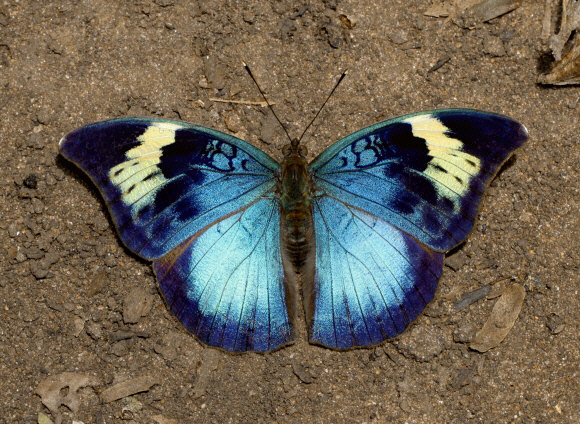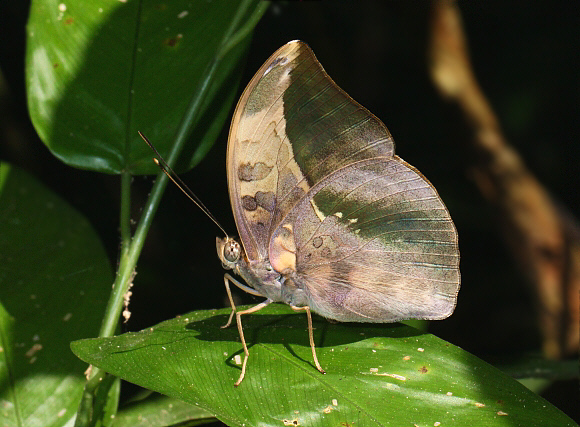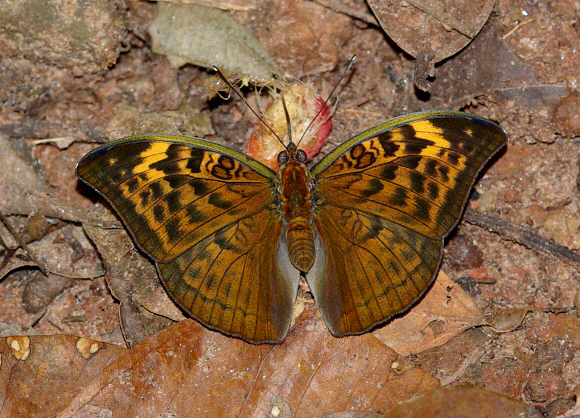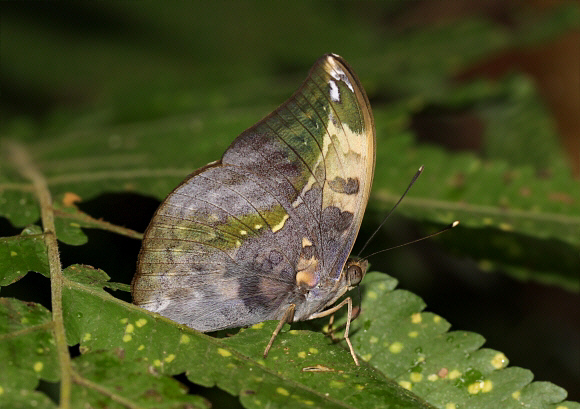
Introduction
The genus Bebearia is closely allied to Euphaedra. The females of many species are very similar on their uppersides to that genus. The undersides of Bebearia however are always cryptically patterned and usually resemble dead leaves, unlike Euphaedra which are usually yellow with black spots and pink basal patches. Another difference between the two genera is that Euphaedra have orange palpi while those of Bebearia are dull earthy brown.
The male of Bebearia sophus is one of the most beautiful butterflies in Africa. The upperside wings have a golden sheen and seem almost to glow as the butterfly basks on a leaf in dappled sunlight. The female is completely different in appearance, and at first glance could easily be mistaken for a Euphaedra species. In Euphaedra however the forewing apex is always rounded, unlike the sickle-shaped apex of sophus.
Bebearia sophus is a common and very widespread species, found throughout the forested regions of Africa from Senegal to western Kenya.

Habitats
This species occurs in the greatest numbers in rainforest, but also penetrates well into secondary forest, riparian edges, and can even appear in parks and village gardens.

Lifecycle
The larval foodplants include Landolphia ( Apocynaceae ) and Chrysophyllum ( Sapotaceae ).

Adult behaviour
Males are commonly seen basking on low foliage, where shafts of sunlight filter through the trees. They are also often seen on the ground, feeding at fallen fruits in company with Aterica galena and various Euphaedra species. Females are not seen quite as often, but are also fond of feeding at fallen fruit.
Both sexes spend short periods basking, but more often they hold the wings erect, at which time their cryptic underside pattern affords them excellent camouflage. When the butterflies are freshly emerged the underside is richly toned in olive and cream, but in older specimens this fades and the butterflies take on a much drabber appearance.

